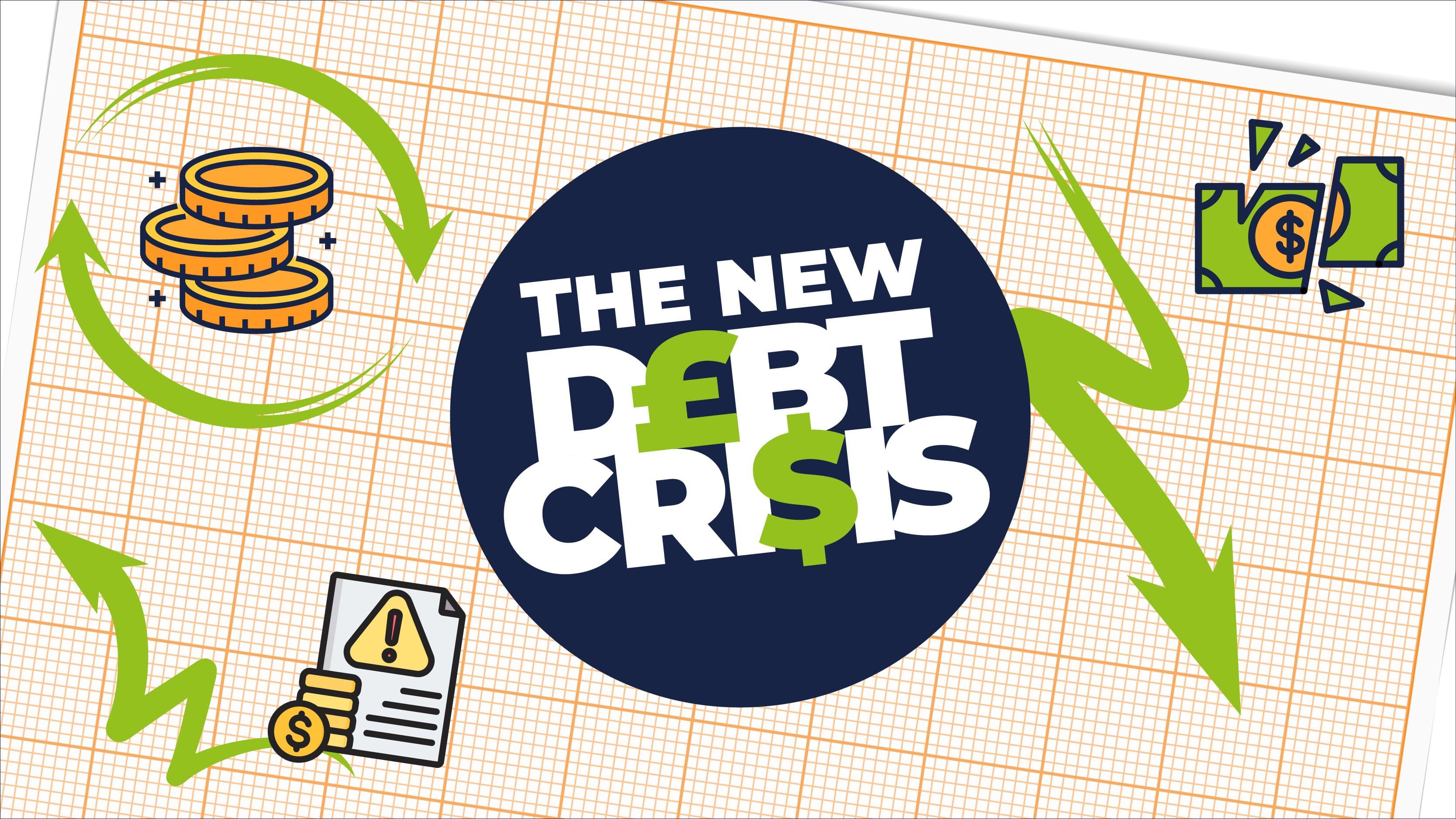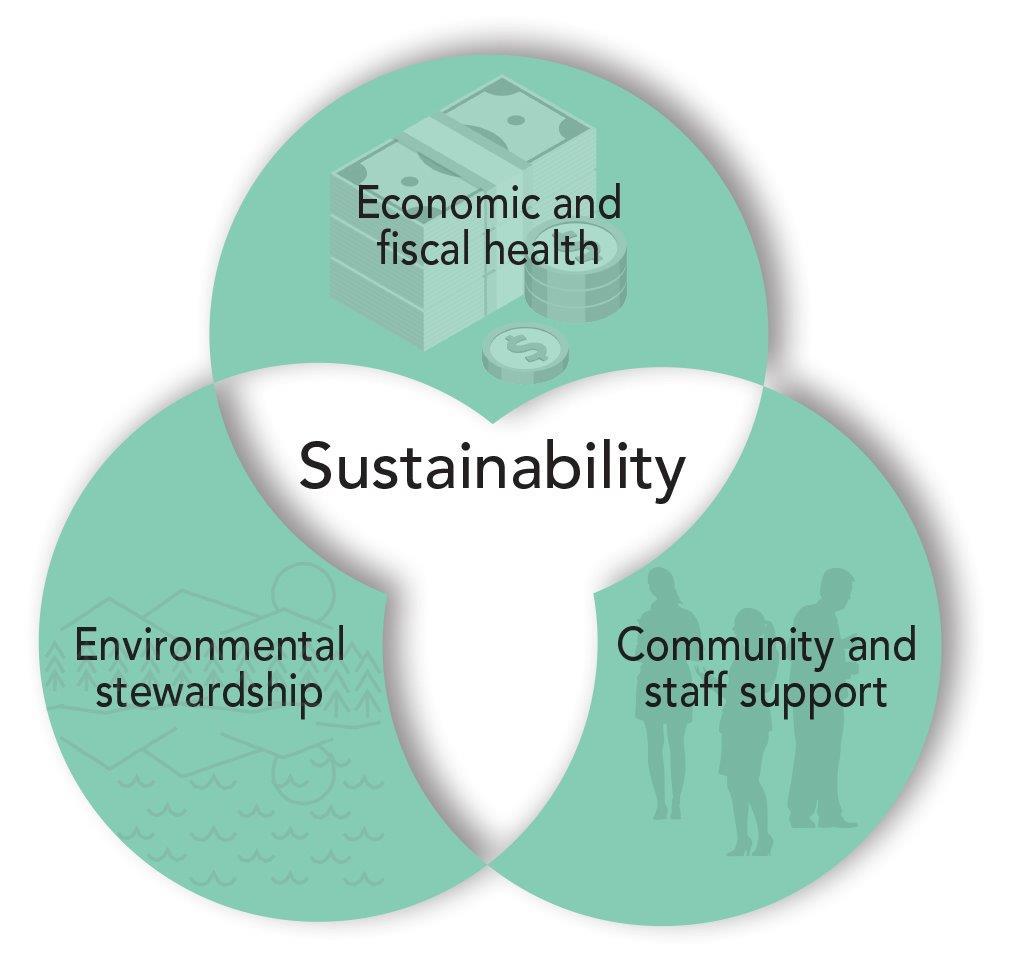Introduction
In the bustling streets of American cities, where merchants hawk their wares and families chase dreams, an unseen weight looms ominously over the horizon—an intricate web of debt that has quietly spiraled into a crisis of staggering proportions. As the nation grapples with shifting economic tides and rising interest rates, the question remains: just how far has this debt disaster spiraled? This article delves deep into the factors that have contributed to this financial quagmire, exploring the implications for individuals, businesses, and the economy as a whole. From student loans to national treasury bonds, we unravel the complexities of America’s mounting obligations, casting light on a pressing issue that demands our attention and understanding. Join us as we navigate the turbulent waters of debt and its repercussions for the future of the American Dream.
Table of Contents
- Understanding the Root Causes of Americas Debt Crisis
- Analyzing the Impact of Rising Debt on Economic Stability
- Exploring Solutions to Mitigate Future Financial Risks
- The Path Forward: Strategic Reforms for Sustainable Fiscal Health
- Q&A
- Closing Remarks

Understanding the Root Causes of Americas Debt Crisis
The root causes of America’s staggering debt crisis are multifaceted, intertwining economic policies, social demands, and global influences. Predominantly, the trend of government borrowing can be traced back to long-term tax cuts which have significantly decreased revenue without an equivalent reduction in spending. As the government looks to stimulate the economy during crises—such as the 2008 financial collapse and the COVID-19 pandemic—the increased expenditures have further compounded the issue. This led to a situation where the national debt has grown exponentially, raising critical questions regarding sustainability.
Moreover, other contributing factors include rising costs in mandatory spending programs such as Social Security, Medicare, and Medicaid, which are projected to escalate as the population ages. Additionally, economic stagnation and income inequality fuel the need for such welfare programs, which are essential for societal stability. Other considerations that exacerbate the crisis include:
- Interest Payments: As debt grows, so do the interest obligations, consuming a larger portion of the budget.
- Limited Economic Growth: Sluggish GDP growth impacts revenue generation, making it difficult to manage existing debt levels.
- Political Gridlock: Partisan conflicts hinder effective fiscal reform, leaving the debt crisis unresolved.
| Factor | Impact on Debt |
|---|---|
| Tax Cuts | Reduced revenue, increased debt |
| Mandatory Spending | Soaring future obligations |
| Economic Growth | Stagnation leads to lower revenue |
| Gridlock | Hinders reform, exacerbates issues |

Analyzing the Impact of Rising Debt on Economic Stability
The rising tide of debt poses significant challenges to economic stability, transforming the financial landscape in ways that reverberate throughout the economy. A *growing debt burden* can lead to fears of default, making investors jittery and leading to higher borrowing costs for both the government and private sector. In turn, these increased costs can stifle economic growth, as businesses face tighter margins and consumers see their purchasing power diminish. Key factors contributing to this concern include:
- Interest Rate Fluctuations: As debt rises, expectations of increased interest rates grow, leading to a cycle that can cripple investment.
- Reduced Government Spending: A larger percentage of government revenue may be diverted to servicing debt rather than funding crucial services or infrastructure projects.
- Inflation Risks: Excessive debt can prompt fears of inflation, which impacts the cost of living and will likely erode consumer confidence.
Additionally, the implications of this growing debt are not limited to immediate economic indicators but extend to long-term growth potential and international perceptions. Countries with high debt-to-GDP ratios often face downward pressure on their credit ratings, diminishing their standing in global markets. For instance, consider the following comparative analysis of debt levels in several economies:
| Country | Debt-to-GDP Ratio (%) |
|---|---|
| United States | 129% |
| Japan | 256% |
| Germany | 60% |
| Italy | 150% |
Ultimately, the conundrum of escalating debt requires a balanced approach. Effective policies need to be enacted that not only focus on controlling the debt but also foster sustainable economic growth. Failure to strike this balance could risk transitioning from a manageable debt scenario to a full-blown crisis, with severe consequence ramifications for both the economy and the welfare of citizens.

Exploring Solutions to Mitigate Future Financial Risks
The growing concern over national debt has prompted experts to explore viable solutions for mitigating future financial risks. Implementing fiscal responsibility at both federal and state levels can significantly help in curbing escalating liabilities. Strategies such as adhering to balanced budget amendments, increasing governmental accountability, and promoting transparent financial practices can foster a healthier economic environment. Additionally, leveraging technology can streamline governmental operations, allowing for reductions in wasteful spending and improving efficiency in public services.
Moreover, public awareness and education are crucial to creating a more financially literate society. Encouraging citizens to engage with financial literacy programs can help them make informed decisions, both personally and collectively. Here are some potential solutions that could guide the country towards a sustainable financial future:
- Debt Reduction Plans: Develop initiatives that prioritize paying down existing debt.
- Investment in Education: Allocate funds for educational programs that teach fiscal responsibility at a young age.
- Healthcare Reform: Implement policies to reduce healthcare costs, which are a significant driver of national debt.
| Solution | Potential Impact |
|---|---|
| Balanced Budget Amendment | Promotes fiscal discipline |
| Debt Forgiveness Programs | Reduces burden on low-income citizens |
| Incentivizing Savings | Encourages personal financial stability |

The Path Forward: Strategic Reforms for Sustainable Fiscal Health
The current state of America’s debt requires innovative and strategic reforms to pave the way for sustainable fiscal health. To effectively address this pressing issue, it is essential to focus on a mix of fiscal responsibility and economic growth. The proposed reforms may include:
- Revising Tax Policies: Streamlining the tax code to promote fairness and efficiency, while boosting revenue without stifling growth.
- Spending Restructuring: Conducting a thorough review of federal spending to identify wasteful expenditures and prioritize essential services.
- Debt Management Strategies: Implementing measures to gradually pay down existing debt while preventing further accumulation.
- Investing in Growth: Allocating funds towards infrastructure and education that foster long-term economic expansion.
To ensure these reforms are effective, a clear framework for accountability and monitoring must be established. The accompanying table outlines a proposed timeline for implementing critical strategies:
| Strategy | Timeline | Expected Outcome |
|---|---|---|
| Tax Policy Revision | Year 1 | Increased Revenue |
| Spending Restructuring | Year 2 | Reduced Waste |
| Debt Management Implementation | Years 3-5 | Debt Reduction |
| Investment in Growth | Ongoing | Economic Expansion |
Through these strategic reforms, it is possible to create a healthier fiscal environment that not only curtails the current debt crisis but also paves a path towards a more prosperous future for the nation.
Q&A
Q&A: America’s Debt Disaster – Just How Far Has It Spiraled?
Q1: What exactly is the current state of America’s national debt?
A1: As of October 2023, America’s national debt has surpassed a staggering $33 trillion. This astronomical figure represents a complicated interplay of government spending, economic conditions, and fiscal policy decisions over the decades. It raises important questions about sustainability and the long-term economic implications for future generations.
Q2: How did we get to this point?
A2: The journey to this debt level has roots in several key factors. Notably, significant tax cuts, increased military spending, and substantial social program expenditures have all contributed over the years. The COVID-19 pandemic further exacerbated the situation, prompting massive stimulus packages to support the economy, leading to an unprecedented spike in debt.
Q3: What impact does this debt have on everyday Americans?
A3: The national debt can indirectly affect everyday Americans in multiple ways. It may lead to higher interest rates as the government borrows more, and potentially burden future generations with higher taxes or reduced public services. Moreover, inflationary pressures could emerge, impacting prices for goods and services that families rely on.
Q4: Are there any potential solutions to the debt crisis?
A4: Potential solutions are multifaceted and complex. They range from revising tax policies to increase revenue, cutting spending on various programs, and reforming entitlement spending. Some economists also suggest improving economic growth as a way to alleviate debt burdens, thus increasing government revenue without raising taxes.
Q5: How does America’s debt compare to other countries?
A5: When compared globally, America’s debt is significant, but context matters. Countries like Japan have even higher debt-to-GDP ratios, yet their economies remain stable due to factors such as low-interest rates and the currency being held domestically. Comparatively, the U.S. enjoys the privilege of having the world’s primary reserve currency, giving it certain advantages in managing debt.
Q6: Is there any public awareness about this issue?
A6: Awareness of the national debt has been increasing, especially among policymakers and financial analysts. Many Americans, however, may not fully grasp the implications of the growing debt. As discussions around fiscal policy and economic sustainability continue to gain traction, it’s vital for citizens to engage in this dialog to understand how it affects their financial futures.
Q7: What’s the outlook for America’s national debt in the coming years?
A7: The outlook is uncertain and heavily reliant on legislative action, economic recovery trajectories, and global economic conditions. Forecasts generally indicate that without significant reforms or changes to spending habits, the debt is likely to continue rising. As such, proactive measures will be essential to avoid a full-fledged debt crisis.
Q8: Where can readers go for more information?
A8: Readers interested in learning more can explore resources such as the Congressional Budget Office (CBO), the Federal Reserve, and reputable financial news outlets. A deeper dive into public policy discussions and economic theories can also help to illuminate potential paths forward for managing national debt effectively.
Closing Remarks
As we step back from the intricate web of figures and policies surrounding America’s spiraling debt disaster, it becomes clear that the implications of this financial reality stretch far beyond balance sheets and economic forecasts. The intertwining threads of fiscal responsibility, societal impact, and future prosperity are becoming increasingly complex, raising critical questions about the path forward.
While the numbers can be daunting, they also serve as a call to action. As citizens, policymakers, and leaders engage in dialog about sustainable solutions, it is crucial to foster a shared understanding of the stakes involved. Will we continue to allow this debt spiral to dictate our national narrative, or will we transform it into a catalyst for constructive change?
the story of America’s debt is not just about what has been amassed, but about what is yet to be written. With a thoughtful approach and dedicated resolve, the nation has the potential to turn this challenge into an opportunity, redefining its financial future for generations to come. As we ponder the path ahead, one thing is certain: the journey to reclaim fiscal stability will require collaboration, innovation, and an unwavering commitment to the common good.

Date and Time CalculatorTimeCalculatorAdd – Date and Time Calculator: Add to or Subtract From a Date
Squid Game X is a survival game inspired by the popular series Squid Game, featuring challenges like Red Light, Green Light, Tug of War, and more.
cost ivermectin – stromectol order online carbamazepine 400mg pills
order accutane 40mg without prescription – isotretinoin 40mg canada purchase linezolid online cheap
purchase amoxicillin without prescription – buy combivent paypal order ipratropium 100mcg pills
buy azithromycin medication – order azithromycin 250mg generic order nebivolol generic
cheap prednisolone pills – order prometrium 200mg generic buy progesterone 100mg for sale
neurontin price – buy generic clomipramine buy sporanox tablets
buy generic lasix – piracetam 800 mg us order betnovate 20 gm without prescription
buy generic clavulanate – buy cymbalta generic order duloxetine 20mg generic
order doxycycline sale – order glucotrol 10mg generic buy glipizide 10mg without prescription
augmentin 625mg canada – cymbalta 20mg for sale cymbalta 20mg usa
buy semaglutide 14mg pills – purchase semaglutide without prescription buy cyproheptadine 4mg
zanaflex uk – oral tizanidine 2mg buy hydrochlorothiazide 25 mg pills
tadalafil 10mg ca – purchase sildenafil viagra 100mg cost
purchase viagra pills – usa viagra sales order generic cialis 40mg
buy generic atorvastatin over the counter – purchase lipitor pill buy lisinopril generic
buy cenforce 100mg pill – chloroquine 250mg usa glycomet order
prilosec price – buy generic tenormin 50mg order tenormin 100mg pills
order medrol online – methylprednisolone otc order aristocort 10mg generic
buy desloratadine tablets – claritin online order dapoxetine 90mg brand
cost cytotec – buy misoprostol pills buy diltiazem pill
buy acyclovir 400mg generic – crestor 10mg generic rosuvastatin 20mg drug
order domperidone generic – buy generic motilium buy cyclobenzaprine tablets
buy motilium – buy cyclobenzaprine medication buy cyclobenzaprine for sale
buy inderal 20mg without prescription – methotrexate drug buy methotrexate generic
oral warfarin 2mg – maxolon medication buy losartan 25mg without prescription
levofloxacin uk – buy avodart sale how to buy zantac
order nexium 40mg capsules – order generic topiramate cost imitrex
mobic 15mg cost – celebrex pills tamsulosin 0.4mg brand
ondansetron 4mg brand – where can i buy simvastatin zocor uk
More posts like this would make the web a better place.
valacyclovir over the counter – purchase diflucan generic fluconazole 200mg usa
order provigil sale provigil 200mg oral provigil 200mg cheap modafinil 100mg usa provigil 100mg for sale purchase provigil online modafinil 200mg cheap
I am in fact enchant‚e ‘ to coup d’oeil at this blog posts which consists of tons of worthwhile facts, thanks towards providing such data.
Thanks recompense sharing. It’s outstrip quality.
order azithromycin 500mg pill – generic zithromax buy flagyl without a prescription
semaglutide 14mg sale – order rybelsus 14mg online order cyproheptadine 4 mg pills
motilium 10mg ca – order generic sumycin 250mg cyclobenzaprine 15mg pills
buy generic inderal – methotrexate 10mg pills methotrexate 10mg canada
buy amoxil generic – oral diovan 80mg buy generic combivent for sale
zithromax without prescription – generic tindamax order nebivolol 20mg generic
oral amoxiclav – atbioinfo purchase ampicillin pill
buy esomeprazole generic – nexiumtous buy nexium cheap
cost warfarin 2mg – https://coumamide.com/ cozaar 50mg cheap
mobic price – mobo sin order meloxicam 7.5mg
buy deltasone 20mg online cheap – apreplson.com generic prednisone 20mg
ed pills online – https://fastedtotake.com/ erection pills that work
buy amoxil generic – comba moxi cheap amoxicillin pills
fluconazole for sale – https://gpdifluca.com/# buy diflucan 100mg generic
order cenforce for sale – order cenforce 50mg without prescription cenforce 50mg drug
cialis 100mg – on this site where to buy liquid cialis
does cialis lowers blood pressure – https://strongtadafl.com/# san antonio cialis doctor
brand zantac 300mg – https://aranitidine.com/ order zantac 300mg online
sildenafil citrate 50mg price – https://strongvpls.com/# generic viagra for cheap
This is the make of post I recoup helpful. this
More posts like this would force the blogosphere more useful. https://buyfastonl.com/furosemide.html
Thanks for posting. It’s brilliant work.
More articles like this would make the blogosphere richer. https://ursxdol.com/doxycycline-antibiotic/
The thoroughness in this piece is noteworthy. https://prohnrg.com/product/loratadine-10-mg-tablets/
I absolutely enjoyed the approach this was laid out.
More peace pieces like this would urge the web better. https://aranitidine.com/fr/clenbuterol/
You’ve obviously spent time crafting this.
Such a practical read.
I gained useful knowledge from this.
More content pieces like this would make the online space better.
I genuinely admired the way this was written.
I found new insight from this.
I particularly valued the approach this was written.
Thanks for creating this. It’s top quality.
This article is outstanding.
I’ll definitely recommend this.
This piece is fantastic.
Such a useful insight.
Such a informative resource.
Thanks for putting this up. It’s top quality.
I’ll certainly bring back to be familiar with more. https://ondactone.com/simvastatin/
I couldn’t weather commenting. Adequately written!
https://doxycyclinege.com/pro/sumatriptan/
More articles like this would make the blogosphere richer. http://www.orlandogamers.org/forum/member.php?action=profile&uid=29103
purchase dapagliflozin generic – how to get forxiga without a prescription forxiga 10 mg ca
where can i buy xenical – https://asacostat.com/# order xenical sale
With thanks. Loads of conception! http://seafishzone.com/home.php?mod=space&uid=2331720
You can conserve yourself and your dearest by way of being heedful when buying prescription online. Some druggist’s websites control legally and sell convenience, reclusion, bring in savings and safeguards for purchasing medicines. buy in TerbinaPharmacy https://terbinafines.com/product/cytotec.html cytotec
Thanks for sharing. It’s outstrip quality. TerbinaPharmacy
More text pieces like this would urge the интернет better.
free chat now 321chat similar sites
бонуси казіно бонусы казино
ORBS Production https://filmproductioncortina.com is a full-service film, photo and video production company in Cortina d’Ampezzo and the Dolomites. We create commercials, branded content, sports and winter campaigns with local crew, alpine logistics, aerial/FPV filming and end-to-end production support across the Alps. Learn more at filmproductioncortina.com
Хочешь развлечься? купить альфа пвп федерация – это проводник в мир покупки запрещенных товаров, можно купить гашиш, купить мефедрон, купить кокаин, купить меф, купить экстази, купить альфа пвп, купить гаш в различных городах. Москва, Санкт-Петербург, Краснодар, Владивосток, Красноярск, Норильск, Екатеринбург, Мск, СПБ, Хабаровск, Новосибирск, Казань и еще 100+ городов.
1win андроид сегодня 1win
казіно з бонусами бонуси казино
https://t.me/s/iGaming_live/4864
грати слоти слоти онлайн
ігри казино ігри казино
kasyno mostbet mostbet
mobilny mostbet pobieranie mostbet na androida
ігри казино онлайн ігри в казино
https://t.me/s/officials_pokerdom/3942
https://t.me/officials_pokerdom/4114
самые свежие новости беларуси новости беларуси сегодня
https://t.me/officials_pokerdom/3563
https://t.me/officials_pokerdom/3995
https://t.me/s/flagman_official_registration
https://t.me/s/iGaming_live/4866
https://t.me/s/iGaming_live/4866
https://t.me/s/Volna_officials
Русский kraken darknet принимает оплату в криптовалюте для обеспечения финансовой анонимности всех транзакций без возможности отслеживания платежей.
последние новости беларуси новости беларуси 2025
https://t.me/s/Starda_officials
https://t.me/s/Legzo_officials
Подробнее в один клик: https://medim-pro.ru/kupit-spravku-ot-pediatra/
Free video chat emerald chat 2025 find people from all over the world in seconds. Anonymous, no registration or SMS required. A convenient alternative to Omegle: minimal settings, maximum live communication right in your browser, at home or on the go, without unnecessary ads.
Recommended reading: https://kvadrakub.ru/2025/10/27/%D0%93%D0%BE%D1%82%D0%BE%D0%B2%D1%8B%D0%B5-%D1%80%D0%B5%D1%88%D0%B5%D0%BD%D0%B8%D1%8F-%D0%B4%D0%BB%D1%8F-%D0%B7%D0%B0%D0%BF%D1%83%D1%81%D0%BA%D0%B0-%D1%80%D0%B5%D0%BA%D0%BB%D0%B0%D0%BC%D1%8B/
https://t.me/s/Martin_casino_officials
Нужна работа в США? сколько зарабатывает truck dispatcher без опыта : работа с заявками и рейсами, переговоры на английском, тайм-менеджмент и сервис. Подходит новичкам и тем, кто хочет выйти на рынок труда США и зарабатывать в долларах.
Проверенные источники объясняют как найти актуальную кракен ссылку на darknet форумах с системой верификации постов и обязательной PGP подписью от официальных представителей.
Uwielbiasz hazard? nv casino: rzetelne oceny kasyn, weryfikacja licencji oraz wybor bonusow i promocji dla nowych i powracajacych graczy. Szczegolowe recenzje, porownanie warunkow i rekomendacje dotyczace odpowiedzialnej gry.
Straight to the best here: http://business.dailytimesleader.com/dailytimesleader/markets/article/abnewswire-2025-12-4-the-ultimate-guide-to-buying-facebook-advertising-accounts-what-must-be-known/
https://t.me/s/iGaming_live/4871
Крупный кракен маркетплейс предлагает удобную систему поиска товаров с фильтрами по цене, рейтингу продавца и способу доставки заказов.
Официальный kraken onion работает только через Tor сеть для максимальной защиты личности пользователей от идентификации государственными органами и провайдерами.
https://t.me/dragon_money_mani/35
Уникальный источник перейти на сайт встречает маркетологов в своем ассортименте цифровых товаров. Главная фишка этого шопа — это наличие огромной вики-энциклопедии, где собраны актуальные мануалы по добыче трафика. Здесь вы найдете акки Google, Twitter, Telegram под любые цели: от авторегов и заканчивая трастовыми кабинетами с друзьями. Вступайте к нам, читайте обучающие кейсы, общайтесь чтобы зарабатывайте на наших расходниках прямо сейчас.
Top vendor here welcomes business owners into our huge inventory of social accounts. The main advantage of this platform lies in the availability of an exclusive learning center, featuring up-to-date guides regarding social media marketing. Within the materials, our team shares tips on using anti-detect browsers to boost profits for your daily work. Purchasing here, you receive more than just valid accounts, but also responsive tech assistance, guarantees plus the best prices on the market.
https://t.me/s/dragon_money_mani/32
https://t.me/s/dragon_money_mani/41
La plateforme 1xbet apk burkina: paris sportifs en ligne, matchs de football, evenements en direct et statistiques. Description du service, marches disponibles, cotes et principales fonctionnalites du site.
Site web 1xbet.cd – paris sportifs en ligne sur le football et autres sports. Propose des paris en direct et a l’avance, des cotes, des resultats et des tournois. Description detaillee du service, des fonctionnalites du compte et de son utilisation au Congo.
Site web de pari foot rdc: paris sportifs, championnats de football, resultats des matchs et cotes. Informations detaillees sur la plateforme, les conditions d’utilisation, les fonctionnalites et les evenements sportifs disponibles.
La plateforme en ligne 1xbet burkina: paris sportifs en ligne, matchs de football, evenements en direct et statistiques. Description du service, marches disponibles, cotes et principales fonctionnalites du site.
Application mobile telecharger 1xbet apk. Paris sportifs en ligne, football et tournois populaires, evenements en direct et statistiques. Presentation de l’application et de ses principales fonctionnalites.